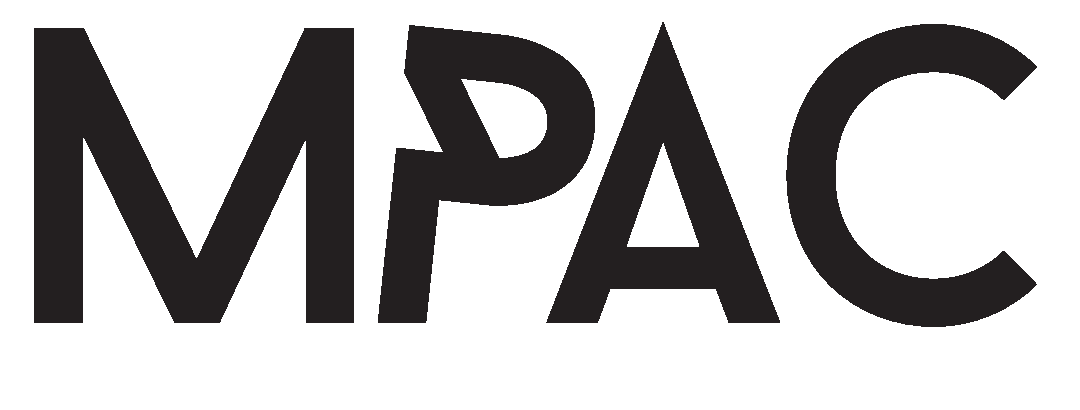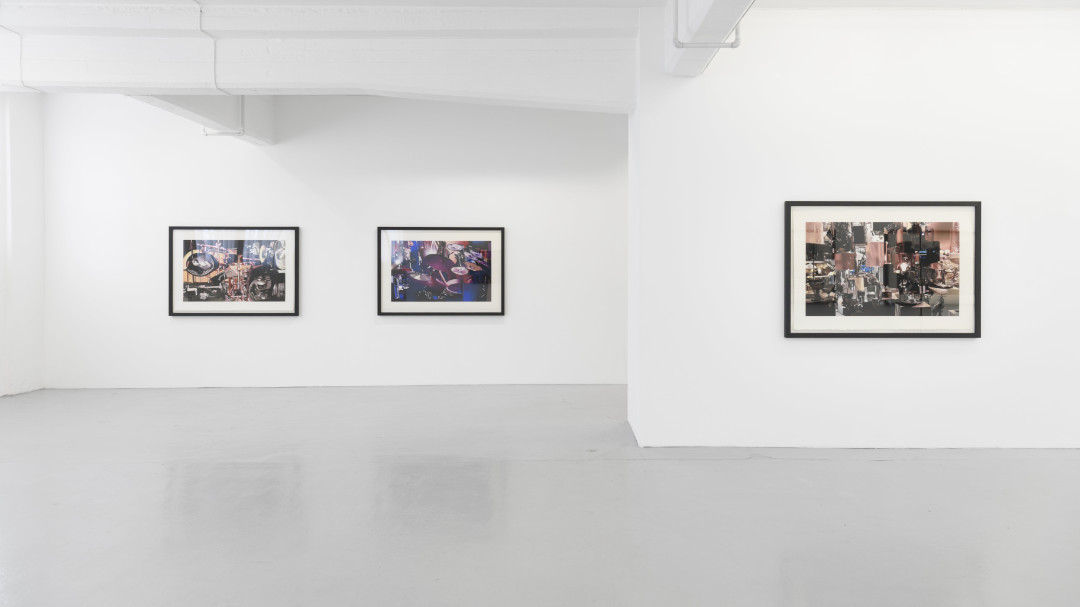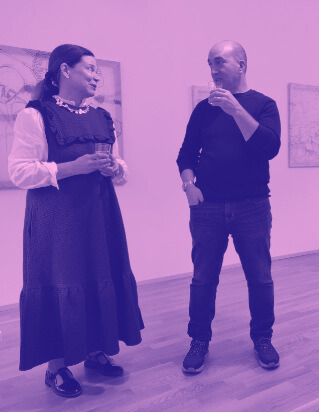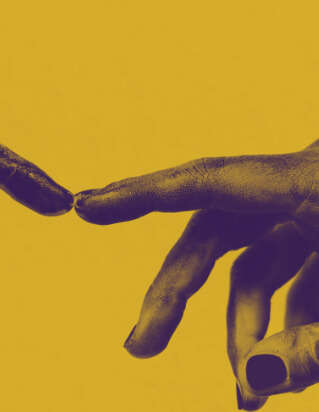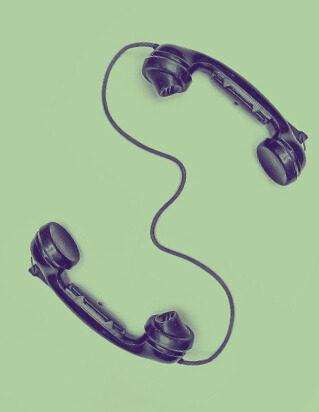A Moment: Roald Kyllingstad’s “Excerpts and compilations” at Galleri Opdahl
Header image: Exhibition view of Excerpts and compilations (Utsnitt og sammenstillinger), ROALD KYLLINGSTAD. Photo: Bitmap / Markus Johansson. Courtesy the artist and Galleri Opdahl.
A moment… Winded and confused, you open your eyes. The dazzling light penetrates through your eyelids and burns your retina with pure whiteness. Tightening your eyelids against the brightness of the moment, the images soon appear less harmful as one gets a feel for the lifelessness of the surroundings. It is as if all animation has been subtracted and all that was left behind was the light that covered the mundane archeology of contemporary life. The awakened gaze navigates through this new empty world and discovers what once was hidden in plain sight. Still objects, vacant structures, anthropogenic (land)scapes, now remain as records of a distant life.
Such are the instances carefully labored by Roald Kyllingstad in his recent body of work displayed at Galleri Opdahl under the title, Excerpts and compilations (Utsnitt og sammenstillinger). It was our first encounter with Kyllingstad’s alluring oeuvre where attentive compositions of shadows and flickers of light simulate, within the flat surface of the paper, a familiar world of textures and volumes, fooling our eyes and brain into believing their fiction.
Upon closer inspection, one gets to understand that these photographic instances are traces of pastel, steadily faded, one into another, smudged cleanly together, with an attentive technicality difficult to comprehend for anyone who has not tried this medium with their own hands.
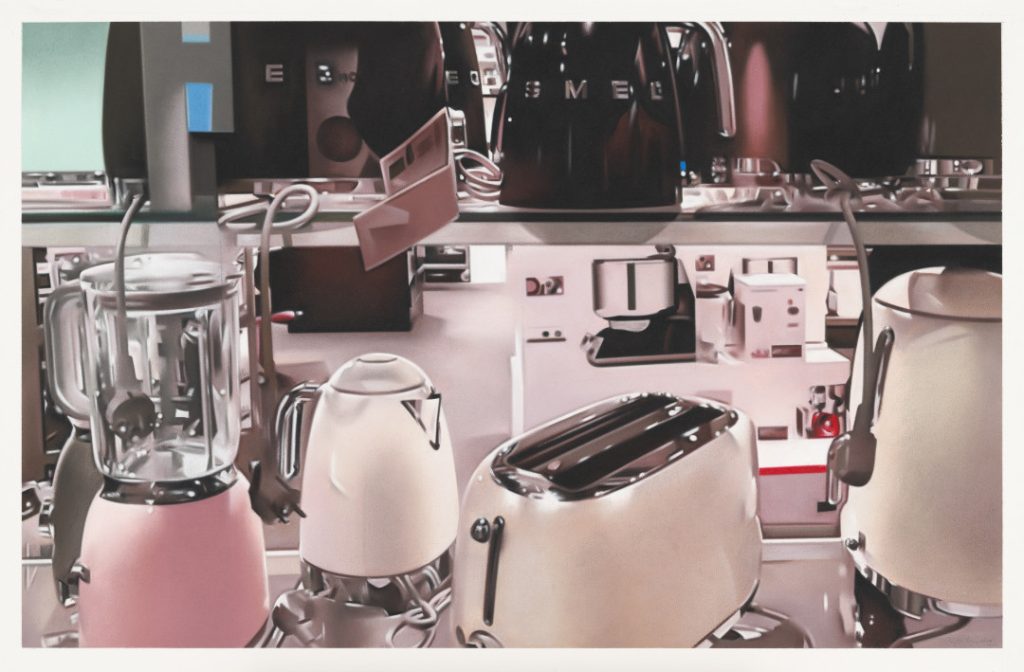
Upon closer inspection, one gets to understand that these photographic instances are traces of pastel, steadily faded, one into another, smudged cleanly together, with an attentive technicality difficult to comprehend for anyone who has not tried this medium with their own hands.
There, so close, with your nose almost touching the paper, exhaling on the smooth glass of the frames, a joyful moment of awareness comes to surface: how delicately corruptible our eyes and minds are; how comfortable it is to search for familiarity in abstract traces of color on paper! The mind weighs the relation between a stroke of white, its intensity and the proximity to a shadow, and instantly registers it as not just a form but also a materiality. Plastic, chrome, glass, brass, car paint, concrete, are all decoded carefully through our familiar method of observing how light caresses these surfaces, how it reflects and bounces from one to another.
And it was this natural reaction to photorealism that pushed and captivated the viewers, bringing them intimately closer to the anthropogenic ‘scapes of Kyllingstad. Curious and doubtful over what is presented, knowing very well that their eyes are deceived by something unreal, the viewers approach and poke, at least with their gaze, the image. If possible, they would certainly feel the pores of the paper and the dusty pastels with their fingers, as the skeptic Thomas had needlessly inserted his finger in Jesus’s spear wound, humorously depicted in Caravaggio’s painting (Incredulità di San Tommaso, 1602). So is the miracle of art and craftsmanship, that pushes the viewer to leave from their comfort zone and dive into the intimate proximity of the work, looking carefully, through all the nuances, at the pencil marks, in an investigative performance. Remembering Casilda Sánchez’s As Inside As The Eye Can See (2009), they discover not just that the images aren’t photographs, but that they are an accumulation of time and a programmatic investment of labor– characteristics that are bound to the ethos of Roald Kyllingstad’s long standing career.
One gets a feel for this work and time and care and patience, even before speaking to the artist and discovering his meticulous methodology; how, for more than 40 years, he has carefully composed his works out of photographic cut-outs, personal snapshots of the world that surrounds him, and of the world that he chooses to not ignore.
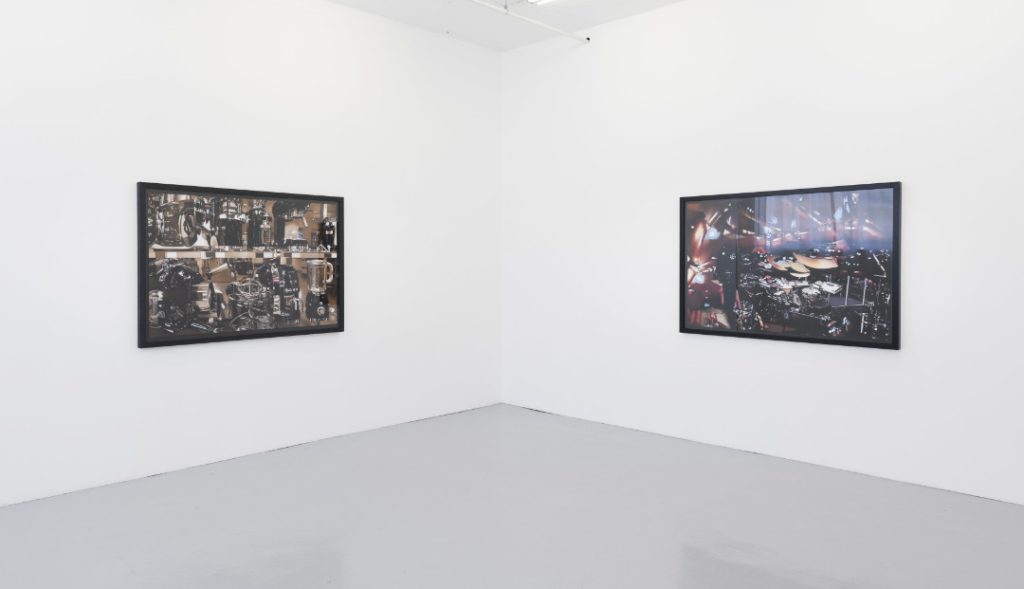
One gets a feel for this work and time and care and patience, even before speaking to the artist and discovering his meticulous methodology; how, for more than 40 years, he has carefully composed his works out of photographic cut-outs, personal snapshots of the world that surrounds him, and of the world that he chooses to not ignore. One learns that each and every work is developed steadily, from sketch to finish, and only after its completion, the process for another starts again, in a repetition that seems heroic.
But there is more to his oeuvre than the work inscribed with the process of production of the art itself. Moving away from the mirage of photorealism, or the seductive play of lights that balance between abstraction and figuration, stepping outwards, one starts to observe the airy scenery of the instances presented. Capturing instances of time that embody lifelessness, the artist preserves moments of strange tranquility, now reproduced in a dimmed light that strengthens the mystery of the present. The rooms are empty, almost exhausted, yet they are animated by precariously illuminated objects. A parking lot– cars resting in the murky shadow of concrete, waiting for their owners and exploiters. The interior of a vehicle– inviting you to ignite the motor or stop it, before getting out in some sort of liberation. A room full of brass musical instruments– in still quietness, where a soft minimal disturbance could bring the most trembling noise. The hairdresser salon– with its empty chairs and mirrors, standing under a dim artificial light the following day. An accumulation of kitchenware– longing to be used in culinary extravaganza. In each instance, Kyllingstad’s vitrines of carefully arranged objects tirelessly present themselves to the gazes of potential customers, fueling their desire to consume.
The same post-apocalyptic tranquility floats over Kyllingstad’s anthropogenic ‘scapes, immortalizing an after-human world at an incipient stage, a moment where everything is still and untouched, neither by time nor other erosions.
These are, in large, the excerpts of contemporary life that make-up the present exhibition following Kyllingstad’s works produced from 2021 onwards. Grasping the alienating atmosphere of his works, and especially the emptiness of the cityscapes, one remembers the very recent events of the COVID-19 lockdown that had shaped social life. From a 2020 perspective, the spaces proposed by Roald Kyllingstad could very well fit into a post-apocalyptic scenario resembling John Wyndham’s The Day of the Triffids (1951) where the main character awakens to a world of blinded population, and consequently overturning all aspects of life. The same post-apocalyptic tranquility floats over Kyllingstad’s anthropogenic ‘scapes, immortalizing an after-human world at an incipient stage, a moment where everything is still and untouched, neither by time nor other erosions. Only objects remain, at peace, finally, after hours, days, and weeks of exhaustion and exploitation.
But the programmatic oeuvre of Kyllingstad goes deeper than just a recent take on life with capitalism at its imminent imposition leaving behind a sea of unusable and overpriced artefacts. Kyllingstad is not reacting to the recent explosion of consumption in its multi-layered possibilities. His work is not a take on how lifeless life can become within a society that socializes solely through buying and consuming.
The artistic eye of Kyllingstad has always stopped and looked at these prosthetics of capitalism; at the vitrines that showcase desires and the screens that reflect hopes for instant gratification and acceptance.
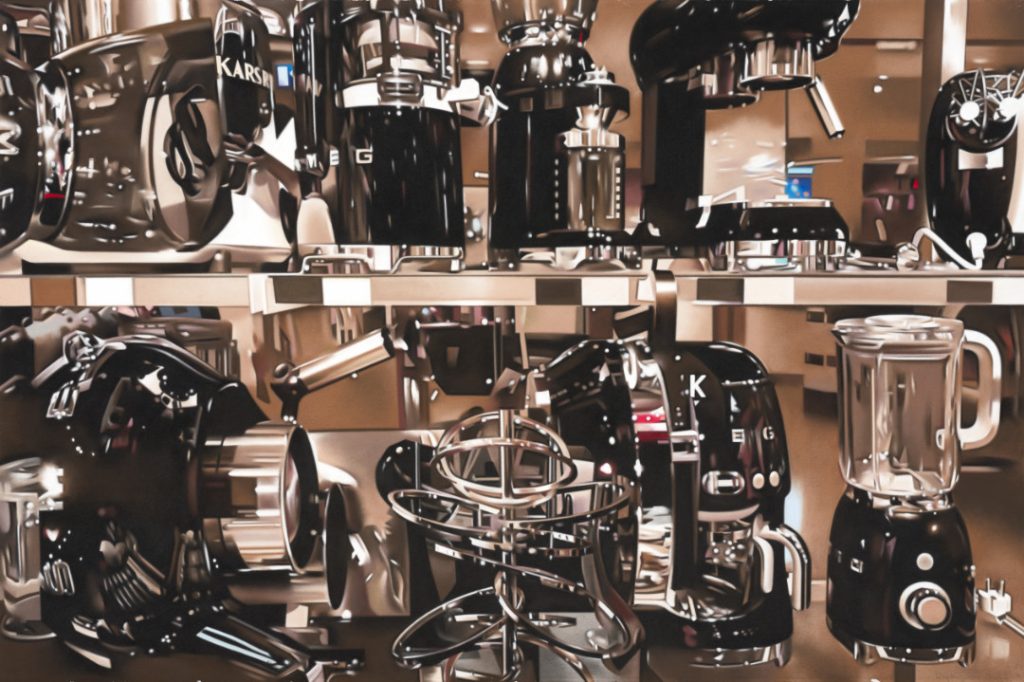
The artistic eye of Kyllingstad has always stopped and looked at these prosthetics of capitalism; at the vitrines that showcase desires and the screens that reflect hopes for instant gratification and acceptance. In a very tactile method, without a flash, without the exuberant energy and color that the phallic capitalism wants to display, Kyllingstad has carefully documented the late-capitalist society starting from the glory and hopeful years of the late 80s and 90s, to the ongoing crisis of 2000s and 2010s and 2020s. From The End of History and the Last Man (Fukuyama 1992) to Imperialism 2.0 and proxy-wars; from televised revolutions in the name of democracy to (techno) feudalism and retroactive politics (aka neofascism); from Made in Germany to ultra-fast fashion; from We Are the World (1985) to Io Capitano (2023), from global warming to climate crisis: the constellations of dialectical illustrations hide under the fine dust of pastel in Kyllingstad’s record of society
Despite the tendency to want to capture a picture of the pure object-oriented world, unruffled by human existence, Kyllingstad’s conspicuously absent vignettes capture another crude actor: the unseen labor or the unseen laborer. The unseen infrastructure can be traced to his early 70s drawings and watercolors, where the artist always chose to look over the corner, outside the beautiful scenery and accept the rough materialism of life, the dirtiness of production and the tiring repetition of work.
One could look over Kyllingstad’s entire art practice and discover a journalistic archive, recordings of vitrines and shop interiors, objects of desire, and promises for future fulfillment. And through his continuous interest and observation, one could see through the perspective of time, the exhaustion of society and the capitalist dream: from baroque agglomerations of objects and products to minimalist displays that evoke the very familiar sterility of contemporary life; from lavish clocks and leather bags, to hyper accelerated fashion where storefronts are constantly changed and the clothes are tired as soon as they arrive in the showroom. One could feel the polyester… one could touch the cheap fragile plastic… and one feels at home in this familiar atmosphere of obsoleteness. We see empty spaces, at rest or resting, and the mass-produced objects, continuing to glimmer despite their destined death–maybe a good metaphor for our own short, accelerated human lives, as mere sparks in the vast history of humanity.
For us it has become impossible to not see this world portrayed within Excerpts and compilations (Utsnitt og sammenstillinger)’s constellation of works, and not have our own bleak thoughts on the future of society mirrored by its imagery. Roald Kyllingstad is a keen observer and through his works a certain angle of the world is not just immortalized, photorealistically, but steadily deconstructed and composed anew, layered, traced, cleanly smudged together, in time, illustrating the spectacularity of the mundane.
Roald Kyllingstad’s Excerpts and compilations is on view at Galleri Opdahl, in Stavanger, Norway, from April 25, 2025, until June 7, 2025.
